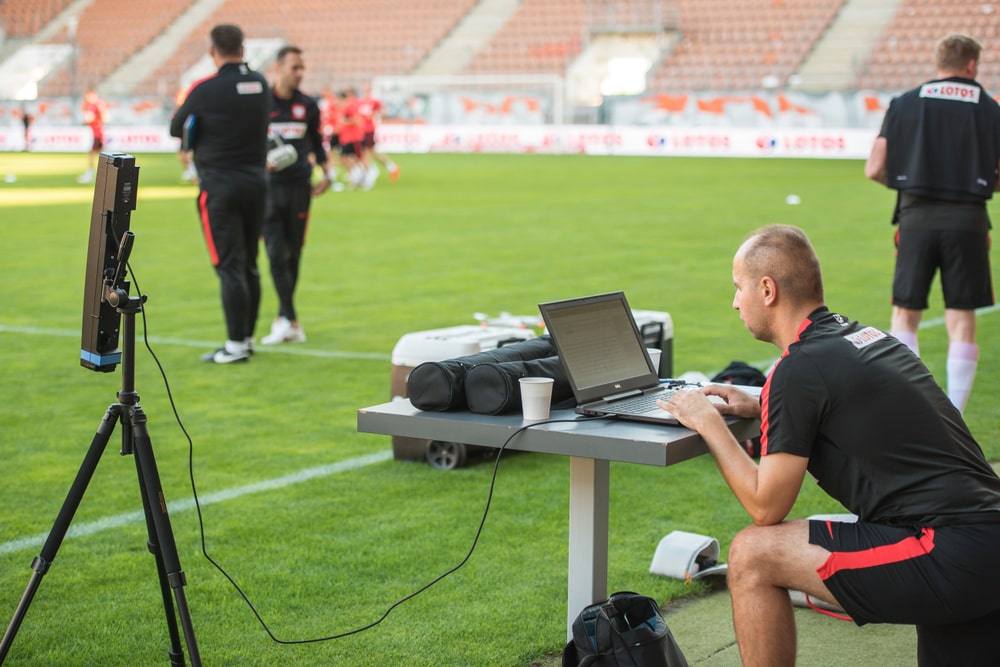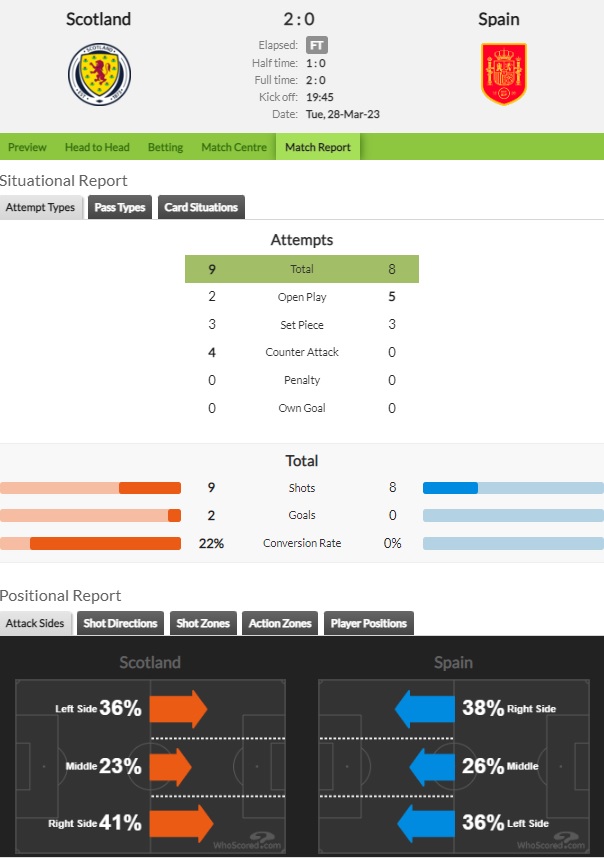Sports Analytics – the new trend in football
In recent years, sports analytics have changed the way teams play the game and enhanced player performance, revolutionizing the world of football. The results are outstanding as more and more football clubs use analytics to inform their decisions both on and off the field.
Table of Contents
How did Sports Analytics jump in Sports? The Story of “Moneyball”
Moneyball is a term used to describe a strategy for building a competitive sports team based on the analysis of data and statistics. The concept was popularized by Michael Lewis’s book “Moneyball: The Art of Winning an Unfair Game,” which chronicled the success of the Oakland Athletics baseball team in the early 2000s. The book focused on the team’s general manager, Billy Beane, who used data analysis to identify undervalued players who could help the team compete with larger and more financially powerful teams.
The Moneyball approach involves a focus on metrics that are often overlooked by traditional scouting methods, such as on-base percentage and slugging percentage in baseball, and expected goals and assists in football. By identifying players who excel in these areas but may be undervalued by the market, teams can build a competitive roster without spending large sums of money on high-profile players.
The Moneyball approach has been widely adopted by many sports teams around the world and has proven to be an effective way to build successful teams on a budget.
How Sports Analytics are used for Recruiting Players
Football teams’ scouting and recruiting procedures have been completely transformed by sports analytics. Clubs may now make well-informed judgments when it comes to scouting out fresh talent and signing players who will have a big impact on their team’s success thanks to the usage of data analytics.
It is definitely worth mentioning Liverpool as an example of how a team may effectively use sports data to improve its hiring procedure. Advanced data analysis is used by the club’s recruitment team to find players who could succeed in Liverpool’s system. With the use of this strategy, Liverpool has routinely found and acquired players who have gone on to play a significant role in the team’s success.
Some of the metrics that Liverpool’s recruiting staff is using to evaluate potential targets are Expected goals and assists (xG and xA), expected goals per 90 minutes (xG/90), and expected assists per 90 minutes (xA/90). The players that are most likely to contribute to Liverpool’s success and fit in well with the team’s system are found using this data.
Liverpool’s recruitment department utilises a network of scouts and analysts in addition to data analysis to compile additional information on prospective recruits. As a result, the organization is better able to recognize potential from a variety of sources and make more informed selections when it comes to recruiting new players.
Overall, the use of sports data has allowed football clubs like Liverpool to make more informed decisions when it comes to recruiting and scouting new talent. This has helped to ensure that clubs are able to identify players who will have a significant impact on their performance both on and off the pitch. As the use of sports data continues to grow, we can expect to see even more innovative approaches to recruitment and scouting in the world of football.
Transfer signing decisions are also made using analytics. Data is being used by clubs to assess prospective additions and discover players who will likely have a big impact on their squad. Smaller clubs with fewer resources can use this technique to find underrated players who have the potential to be successful.
How can data measure Player and Team Performance
Sports Analytics and Player’s performance
The use of data to assess player performance is one of the most significant ways analytics has impacted football. The number of successful passes a player makes as well as the area of the pitch they cover may all be tracked by clubs. Following the identification of strengths and shortcomings, this data is used by coaches to enhance player performance and choose stronger teams.

With the use of data-driven technologies and sophisticated sports analytics, coaches may evaluate player performance and identify their strengths and weaknesses. By analyzing many factors, such as player movement of the ball, speed of actions, passing or shooting accuracy, dribbling and many more, coaches can identify a player’s strengths and potential areas for improvement.
Another way that analytics is changing football is through the use of technology. Clubs are using advanced technology such as tracking systems and wearables to gather fitness or technical skills data on players’ performance. This data is then used to identify patterns and trends, helping clubs to make better decisions on training, tactics, and player development.
How GPS help coaches and trainers to track player’s performance
GPS data provides valuable insights into a football team’s performance by capturing various metrics such as distance covered, speed, acceleration, and deceleration during a match or training session. Coaches and analysts can use this data to evaluate the fitness level of players, track their workload, and identify areas of improvement.
GPS data can also help coaches optimize game tactics by analyzing the position-specific movement patterns of individual players and the team as a whole. Furthermore, GPS data can be used to monitor the recovery of injured players and track their progress towards full fitness. Overall, GPS technology has revolutionized the way football teams evaluate performance, and its use has become increasingly widespread at all levels of the game.
Sports Analytics and Team Performance
In addition to individual player analysis, analytics is also being used to evaluate team performance. Clubs can use data to analyze the team’s tactics and identify areas where they need to improve. For example, if a team is conceding too many goals from set pieces, analytics can help identify the problem and suggest solutions.
By using this data, teams may enhance their tactics, choose players wisely, place them strategically, and create specialized training regimens to help them develop in particular areas. The data can also assist the coaches to choose which formation is most suitable for the team, what strategies to use in the attacking or defensive phase or even what style of play to choose.
For example, a coach during the pre-season may use the friendly games to try different formations, play a more possession or direct game, attack through different channels etc. and based on the metrics, he will identify which tactics are most possible to help his team to succeed.
In general, sports analytics have developed into a vital tool for coaches to unlock the potential of their players and improve overall team performance.
Sports Analytics and engaging fans with the clubs
Moreover, statistics have altered how supporters respond to their team’s performance. Fans have the ability to view a range of data and statistics on their preferred players and teams in order to comprehend the game better. As a result, fan interaction has increased and new opportunities have opened up for it.
Today’s fans are more engaged in conversation, follow the daily lives of the players, read team news, and spend more money to be near their favorite team. As a result, the teams are now generating more revenue from their fan base.Moreover, statistics have altered how supporters respond to their team’s performance.

How can anyone enter the Sports analytics area?
If you want to learn more about football sports analytics, there are several places to start. The following pointers can assist analysts, coaches, sports writers, and anybody else interested in studying football from a statistical perspective:If you want to learn more about football sports analytics, there are several places to start.
The following pointers can assist analysts, coaches, sports writers, and anybody else interested in studying football from a statistical perspective:
- Start with the basics: Before diving into complex data analysis techniques, it’s essential to understand the basics of sports analytics. Familiarize yourself with key metrics used in football, such as expected goals, expected assists, and pass completion rates. You can find resources online to learn about these metrics and how they are used in football. Very important is to read a lot of resources like books, articles, and papers. Two great examples are “Football Hackers: The Science and Art of a Data Revolution” and “The Expected Goals Philosophy: A Game-Changing Way of Analysing Football“
- Learn data analysis techniques: Start learning data analysis techniques once you have a firm understanding of the fundamentals. Start by using fundamental statistical analysis methods like mean, median, and standard deviation. After that, you can advance to more complex strategies like regression analysis, which can be used to determine how variables relate to one another.
- Practice with real data: You must practice with real data if you want to master sports analytics. Online data sets are available for you to use as practice for your analysis techniques. Many technologies, including Excel and Python, are available that can assist you in data analysis.
- Attend workshops and conferences: It might be quite beneficial to attend conferences and seminars if you want to learn more about sports analytics. Many conferences feature sessions on data analysis methods with subject-matter specialists as the presenters. By going to these events, you’ll get the chance to network with other analysts and gain insight into their perspectives.
- Join online communities: There are many online communities dedicated to sports analytics, such as Reddit’s r/SoccerAnalytics and r/footballanalytics. Joining these communities can be an excellent way to connect with other analysts and learn from their insights.
Conclusion
Overall, sports analytics have changed the game of football by giving clubs useful information on individual performance and team strategy. As a result, there have been improvements in player performance, team selection, and fan engagement. We may anticipate even more changes in the world of football in the years to come as the usage of analytics increases.

